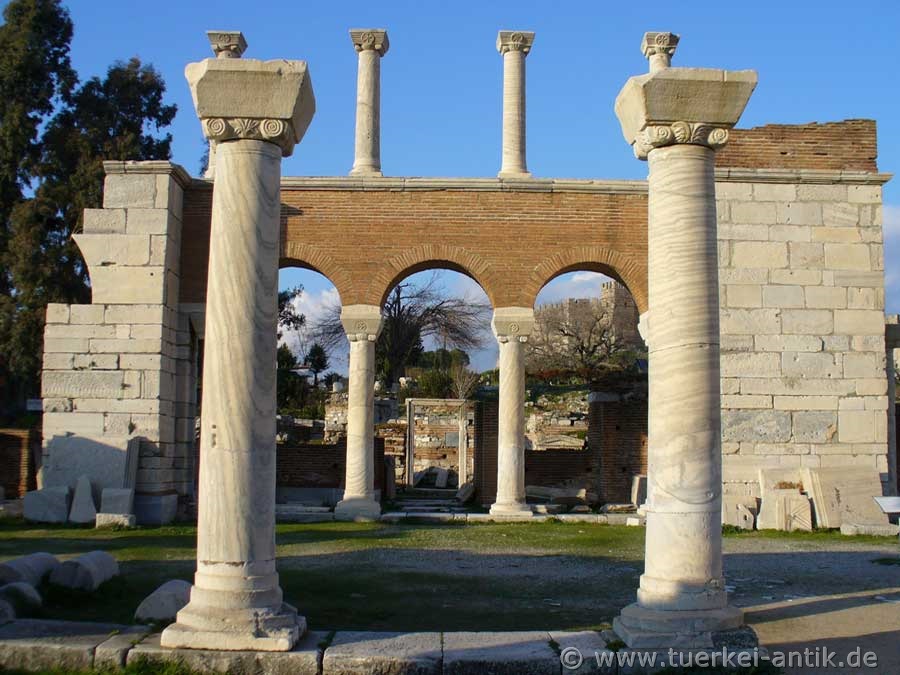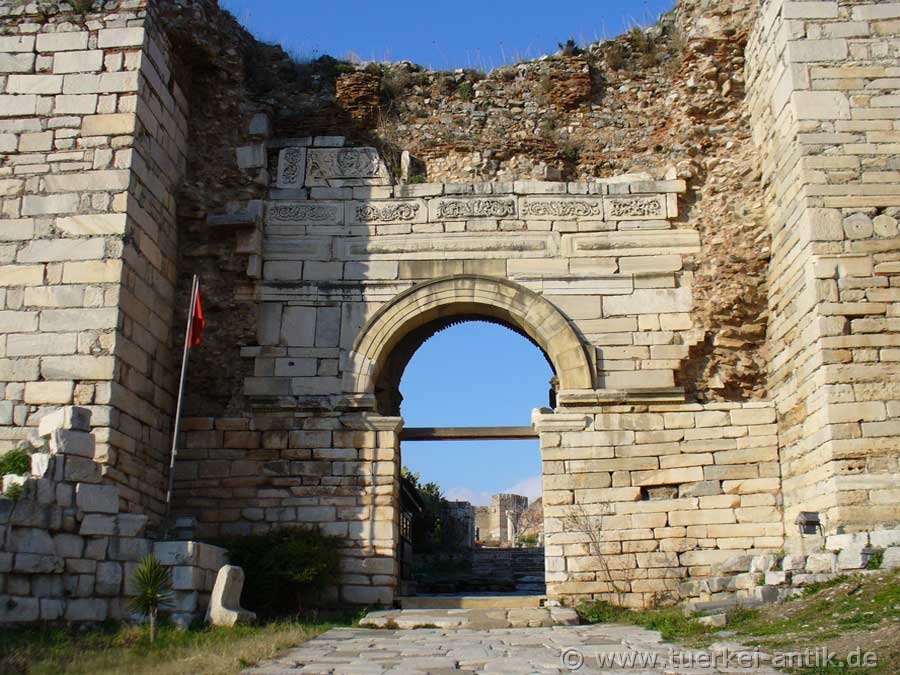 |
| Basilica of St. John in Selšuk | |||
 |
|
||
| In the Basilica | |||
|
The Basilica of St. John was one of the largest sacral buildings of the Byzantine Empire. It was an early Christian basilica dedicated to the apostle John and donated by Emperor Justinian. Its remains are located on the slope of the Ayasoluk Hill, near the centre of Selšuk, just below the Byzantine-Seljuk fortress. |
|||
|
|
|||
| The Gate of Persecution | |||
|
When the Arabs attacked Ephesus in the 7th/8th century, a defensive wall was built around the church. The wall had 20 towers and three gates. Sarcophagi were built into the wall above the archway.
|
|||
|
|
|||
| Sections of the former defensive walls | |||
|
Since the middle of the second century, there has been an early Christian tradition that allows the apostle John, equal to Jesus' favourite disciple, to move with Mary to Ephesus, where he is said to have written the fourth Gospel. According to scientific findings, however, the Gospel of John came into being much later.
|
|||
|
|
|||
| In the Basilica der Basilika | |||
|
According to the old church tradition, St. John was arrested by Emperor Domitian (81-96) during the persecution of Christians.
|
|||
|
|
|||
| The burial chamber of St. John | |||
|
|
|||
|
John supposedly died in the first years of the reign of Emperor Trajan (101 AD). He is the only apostle who died a natural death. He was buried, as he wished, in a cemetery above the city. A mausoleum in the form of a cross vault supported by four columns was erected above the site of the tomb. |
|||
|
|
|||
|
After Christianity became a state religion in the later 4th century, a church was built over John's tomb. The stones and marble of the destroyed temple of Artemis were used for the construction.
After the conquest by the Seljuks in 1330, St. John's Church was temporarily used as a mosque.
|
|||
|
|
|||
|
|
|||
|
The baptismal font in the Baptistery |
|||
|
|
|||
|
The baptismal act was performed in the Baptistery: it is an octagonal room dedicated to John the Baptist. In a round baptismal font embedded in the ground, the baptized person climbed three steps coming from the west to receive the baptism. Afterwards he left the basin, again via three steps to the east. |
|||
| Photos: @chim | |||
| Translation aid: www.DeepL.com/Translator | |||
| Source: Wikipedia and others | |||
|
|
|||


